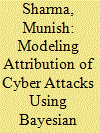|
|
|
Sort Order |
|
|
|
Items / Page
|
|
|
|
|
|
|
| Srl | Item |
| 1 |
ID:
177285


|
|
|
|
|
| Summary/Abstract |
The turn of the twenty-first century brought with it the miraculous economic rise of China in Asia and beyond; American strategy towards the region, denoted by the ‘pivot to Asia’ and acceptance of a ‘Pacific Century’ for the US,1 became increasingly China-centric. Building partnerships, forging security and commercial pacts with Asian countries and enhancing maritime presence across the Indian Ocean Region (IOR) eventually became the fulcrum of America’s Asia strategy, with mainstream strategic perception in the United States on China becoming increasingly negative. American focus on alliances with countries like Japan, South Korea and Australia as well as partnerships with countries like India began to take centre stage in its foreign policy outlook, with a goal to limit or check China’s rise. Concurrently, strategic communities in China did not overlook this growing American presence and interest in Asia; nor did they fail to gauge that the rationale behind such American focus is to contain China. Rather, the Chinese began to view these ever-increasing American strategic partnerships in the region as a ‘mini-NATO’ in the making in Asia.2 More importantly, such a view emerged after China, along with Russia and the Central Asian nations, established the Shanghai Cooperation Organization (SCO), a cohesive security organization in Eurasia, in 2001.
|
|
|
|
|
|
|
|
|
|
|
|
|
|
|
|
| 2 |
ID:
177284


|
|
|
|
|
| Summary/Abstract |
On October 6, 2020, Taiwan’s Legislative Yuan (parliament) passed two important Resolutions, moved by the main opposition party, the Kuomintang (KMT). These sought to ensure ‘US military aid in combating aggression by the Chinese Communist Party (CCP)’ and ‘a resumption of diplomatic relations between the US and Taiwan.’1 The ruling Democratic Progressive Party (DPP) supported the Resolutions. Such a bipartisan consensus is rare in Taiwan’s deeply divided politics. This development underscored the political churn in KMT’s and Taiwan’s domestic politics, as well as its implications for cross-Strait relations.
|
|
|
|
|
|
|
|
|
|
|
|
|
|
|
|
| 3 |
ID:
177282


|
|
|
|
|
| Summary/Abstract |
The article makes an attempt to bring to the fore the various factors which are considered in the due process of attribution of a cyber-attack and the correlation of credible attribution with cyber deterrence. The focal point of the article is a three-step approach to model the decision-making process behind attribution of cyber-attacks using Bayesian Belief Networks and a case study to elucidate on the functioning of the model. Bayesian Belief Networks represent relationships between variables or multiple events and they are used to draw inference or estimate the probability to help decision-making under the conditions of uncertainty.
|
|
|
|
|
|
|
|
|
|
|
|
|
|
|
|
| 4 |
ID:
177281


|
|
|
|
|
| Summary/Abstract |
The Indian Ocean Region (IOR) is a prominent arena in international politics, in terms of trade, tourism, population, among other aspects. Several countries, some unconnected geographically, have shown interest in these waters. These entities offer financial, technical, infrastructural and capacity-building support, and security services to several IOR countries. India, the prominent resident power of this ocean, and others, consider this development unnecessary, uncalled for and unacceptable. This article discusses the possible reasons for provocative behaviour by these disparate forces and offers five alternate models for a cogent maritime security paradigm in the IOR.
|
|
|
|
|
|
|
|
|
|
|
|
|
|
|
|
| 5 |
ID:
177283


|
|
|
|
|
| Summary/Abstract |
The article focuses on analyzing the ‘Cam Ranh policy’ of the Vietnamese government as well as the implementation of this policy since 2002 via its relations with major powers such as Russia, the United States and Japan. The article indicates that these great powers have a significant presence in Cam Ranh Bay. While the China factor is an important cause of American and Japanese interest in Cam Ranh, the traditional relationship with Vietnam and the Far East policy are the driving the choices of Russia in the region. Currently, Russia is the more favoured nation in Cam Ranh, however, with its close relationship with China after the Crimea crisis, the article recommends that Vietnam should consider rebalancing this factor by increasing the leverage with the US and Japan.
|
|
|
|
|
|
|
|
|
|
|
|
|
|
|
|
|
|
|
|
|